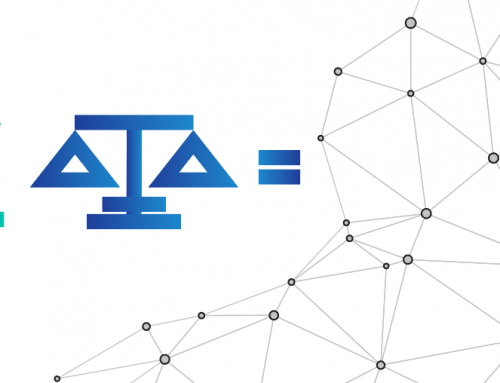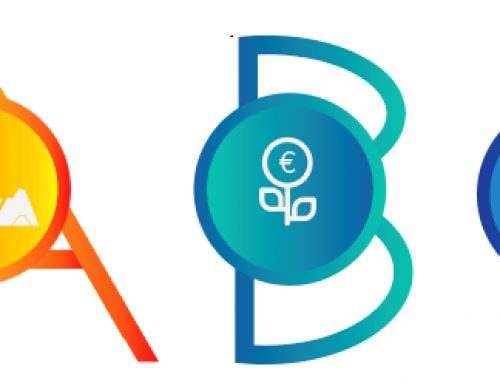Budget – why, what and how
Two javelin throwers who have crossed the 75-metre mark are aiming for the Olympic Games in three years' time. Mr. A is aiming to cross the magical 90-meter mark at the home games at least a month before the Olympics. Mr B's main objective is exactly the same, but he also identifies milestones on an annual, quarterly and monthly basis. In order to achieve the milestones, Mr. B and his coach will draw up an accurate training program.
Which javelin thrower do you find it easier to adjust their training when they find something not working as expected? Which athlete will find it easier to learn from the mistakes made? Who do you think will be more motivated during the training season? Which athlete could we learn more about profitable business from?
In thisarticle, I create an illustrative look at the budget, one of the company's most important tools. Learn what a budget consists of, how to build it, and how to manage it.
Sub-budgets
The javelin thrower's training program is a comparison of the company's sub-budgets. Part budgets build a big picture and help you understand what is possible to achieve and what the realities are.
The most common way to create sub-budgets is to divide them into sales, variable costs, marketing costs, fixed costs, and investments. A cash flow statement is compiled from the sub-budget package and the development of the company's cash register is examined. If you wish, you can read the article on the cash flow and financing statement later.
So let's start with the sub-budgets.
1. Sales budget
The main business of example company X is the sale of software that depends on the number of salespeople. The sale price of one software is 50 € / month. One seller is expected to sell twenty software per month between September and May and ten software per month between June and August. If the company currently has three salespeople and the operations start in January, the sales budget looks in accordance with the result below in simplicity.
2. Variable cost budget
Variable costs refer mainly to costs related to a service or product sold in budgeting. Direct variable costs often include purchases related to a service or product. In our example, we assume that the company buys the software for resale for 20 € / month. Therefore, variable costs can be estimated on the basis of the software sold as shown in the table below.
3. Marketing budget
Marketing costs refer explicitly to all marketing costs. Due to seasonal variations and cash forecasting, marketing costs are convenient to distribute to the monthly level. As can be seen from the result below, our example company invests most in Google advertising between September and May.
4. Fixed cost budget
Fixed costs refer to costs that do not depend on the products or services sold by the company. These include fixed salary, related personnel costs and accruals.
For example, it is assumed that the company pays salespeople a salary of EUR 3000 per month, according to the employment contract. Holidays for each employee accumulate 2.5 days per month. In addition to holiday pay, employees are paid a holiday return allowance of 50% of the accrued holiday pay. In our example, no employee is a shareholder, so personnel costs paid from wages are paid to the company as follows: average earnings-related pension insurance 17.35%, health insurance contribution 0.77%, unemployment insurance contribution 1.50%, accident insurance contribution 0.80% and group life insurance 0.07%, i.e. a total of approximately 19.77%. The company has agreed to pay the employees in full at the end of June.
Perhaps the most familiar fixed cost, i.e. rent our example company costs 500 euros per month, which is also shown in the table below.
5. Investment budget
Investments refer to the allocation of money to intangible or tangible assets that are expected to generate income for the enterprise, usually for more than 12 months. In our example, the company has purchased high-quality computers for sellers right at the beginning of January, which are estimated to last more than three years. The purchase price of the computers has totalled €10,000 and is subject to the 25-item remission rate applicable to the machine and equipment item approved by the tax authorities. As a result, a depreciation of EUR 2,500 will be recognised in the profit and loss account for the first financial year and 7500 * 25 % = EUR 1,875 for the following financial year.
By stating that a share capital of €2,500 has been invested in the company at the beginning of the operation, the company has received an investment of €97,500 at the beginning of the operation, the sale will be registered immediately, and that the purchases will be paid immediately from the cashier and vats will not be taken into account, the budgeted monthly most commonly used expense type result and balance sheet according to the below.
| Month | Oak | Gem | Mars | April | May | Summer | July | Elo | September | October | Nov | Christmas |
|---|---|---|---|---|---|---|---|---|---|---|---|---|
| Software sold pcs (1) | 60 | 120 | 180 | 240 | 300 | 330 | 360 | 390 | 450 | 510 | 570 | 630 |
RESULT (thousands of euros)
| Month | 1 | 2 | 3 | 4 | 5 | 6 | 7 | 8 | 9 | 10 | 11 | 12 |
|---|---|---|---|---|---|---|---|---|---|---|---|---|
| Sales (1) | 3,0 | 6,0 | 9,0 | 12,0 | 15,0 | 16,5 | 18,0 | 19,5 | 22,5 | 25,5 | 28,5 | 31,5 |
| Purchases (2) | -1,2 | -2,4 | -3,6 | -4,8 | -6,0 | -6,6 | -7,2 | -7,8 | -9,0 | -10,2 | -11,4 | -12,6 |
| Other operating expenses (3) | -0,9 | -0,9 | -0,9 | -0,9 | -0,9 | 0,5 | 0,5 | 0.5 | -0,9 | -0,9 | -0,9 | -0,9 |
| Wages (4) | -12,0 | -12,0 | -12,0 | -12,0 | -12,0 | -12,0 | -12,0 | -12,0 | -12,0 | -12,0 | -12,0 | -12,0 |
| Staff costs (4) | -2,4 | -2,4 | -2,4 | -2,4 | -2,4 | -2,4 | -2,4 | -2,4 | -2,4 | -2,4 | -2,4 | -2,4 |
| Accrual of holiday wages (4) | -1,8 | -3,6 | -5,4 | -7,2 | -9,0 | -3,6 | -5,4 | -7,2 | -9,0 | -10,8 | -12,6 | -14,4 |
| Depreciation (5) | -0,2 | -0,2 | -0,2 | -0,2 | -0,2 | -0,2 | -0,2 | -0,2 | -0,2 | -0,2 | -0,2 | -0,2 |
| RESULT | -15,5 | -13,7 | -11,9 | -10,1 | -8,3 | -7,0 | -6,1 | -5,2 | -3,8 | -2,0 | -0,2 | 1,6 |
BALANCE SHEET ASSETS (thousands of euros)
| Month | 1 | 2 | 3 | 4 | 5 | 6 | 7 | 8 | 9 | 10 | 11 | 12 |
|---|---|---|---|---|---|---|---|---|---|---|---|---|
| Machinery and equipment (5) | 9,8 | 9,6 | 9,4 | 9,2 | 9,0 | 8,8 | 8,5 | 8,3 | 8,1 | 7,9 | 7,7 | 7,5 |
| Money and bank receivables (6) | 76,5 | 64,9 | 55,0 | 46,9 | 40,6 | 28,5 | 24,4 | 21,2 | 19,5 | 19,5 | 21,3 | 25,0 |
| TOTAL ASSETS (2) | 86,3 | 74,4 | 64,4 | 56,1 | 49,6 | 37,2 | 32,9 | 29,6 | 27,6 | 27,4 | 29,0 | 32,4 |
BALANCE SHEET LIABILITIES
| Month | 1 | 2 | 3 | 4 | 5 | 6 | 7 | 8 | 9 | 10 | 11 | 12 |
|---|---|---|---|---|---|---|---|---|---|---|---|---|
| Share capital (6) | 2,5 | 2,5 | 2,5 | 2,5 | 2,5 | 2,5 | 2,5 | 2,5 | 2,5 | 2,5 | 2,5 | 2,5 |
| Reserve for invested unrestricted equity (6) | 97,5 | 97,5 | 97,5 | 97,5 | 97,5 | 97,5 | 97,5 | 97,5 | 97,5 | 97,5 | 97,5 | 97,5 |
| PROFIT FOR THE FISCAL YEAR | -15,5 | -13,7 | -11,9 | -10,1 | -8,3 | -7,0 | -6,1 | -5,2 | -3,8 | -2,0 | -0,2 | 1,6 |
| TOTAL EQUITY (2) | 84,5 | 70,8 | 60,0 | 48,9 | 40,6 | 33,6 | 27,6 | 22,4 | 18,6 | 16,6 | 16,5 | 18,1 |
| Deferred holiday pay debt reserve (4) | 1,8 | 3,6 | 5,4 | 7,2 | 9,0 | 3,6 | 5,4 | 7,2 | 9,0 | 10,8 | 12,6 | 14,4 |
| TOTAL LIABILITIES | 1,8 | 3,6 | 5,4 | 7,2 | 9,0 | 3,6 | 5,4 | 7,2 | 9,0 | 10,8 | 12,6 | 14,4 |
| TOTAL LIABILITIES | 86,3 | 74,4 | 64,4 | 56,1 | 49,6 | 37,2 | 32,9 | 29,6 | 27,6 | 27,4 | 29,0 | 32,4 |
Budget scenarios
As the most perceptive have already noticed, the cashier of our example company will be fairly tight before the operations become profitable. If something negatively surprising came up in the first year of operation, the company would probably be in a cash crisis. If, on the other hand, something positively surprising were to come up, you should also be prepared for it. As regards the main budget for the sub-budgets, it makes sense to make best and worst case scenarios in addition to a neutral scenario. They help you prepare for unexpected situations.
Predictions
Like any javelin thrower, a company must learn from its mistakes and optimise its operations in order to succeed. Let us imagine that, after the first three months, it seems that the annual budget will be exceeded or undersed. The forecasts allow the remaining period to be updated to reflect the status quo and the necessary measures to be planned in good time. By creating shorter-term forecasts alongside the annual budget, the company can therefore monitor the development of the financial situation more closely and react more quickly. However, it is advisable to maintain the annual budget as it stands in order to assess the achievement of the larger milestones.
How
Top-down and bottom-up budget
Budgeting is usually managed in companies either from top to bottom or from the bottom up. In the former, the management of the company sets financial targets, operational targets and a set of indicators to be provided to the carrying party. The latter, more inclusive model, is moving in a different direction. If each salesperson in the company were allowed to budget their own sales for the upcoming period, the budget would be bottom-up. In order to encourage sellers, the company could create a cost center for each one in the accounts, from which the seller could easily review the implementation of their budget and update their forecasts as needed. If necessary, it is a good idea to distribute the budget to different cost center, dimensions, projects, etc.
Monitoring and comparing the implementation with the budget and forecasts
Comparing the profit and loss account and balance sheet with handmade budgets quickly gets laborious and frustrating. The most popular option is the latest financial management and reporting software, where the system is updated automatically. Efforts have been made to make monitoring the outcome so effortless that anyone with access to it can do so. The budget and its differences can be read quickly from succinct visual graphs and graphs.
Some financial management and reporting software also offers companies the opportunity to tailor a user interface that suits their needs. For example, management can monitor at a glance the sales and margins of each seller, as well as key indicators that are most important to the company's business, such as the development of the cash situation, the EBITDA and financial results percentage, and the equity ratio.
Finadeck's intelligent financial management and reporting software is designed to make it easier for companies in budgeting, investment planning, analysis of key figures and cash flow, and – visual reporting, industry and competitor comparison, valuation and financial search.
More information on annual leave:
https://www.tyosuojelu.fi/tyosuhde/vuosiloma
For more information on person page charges:
https://www.yrittajat.fi/yrittajan-abc/tyonantajan-abc/tyonantajamaksut/tarkeita-lukuja-2019-599967
More information on tax depreciation rates for investments in the business sector:



